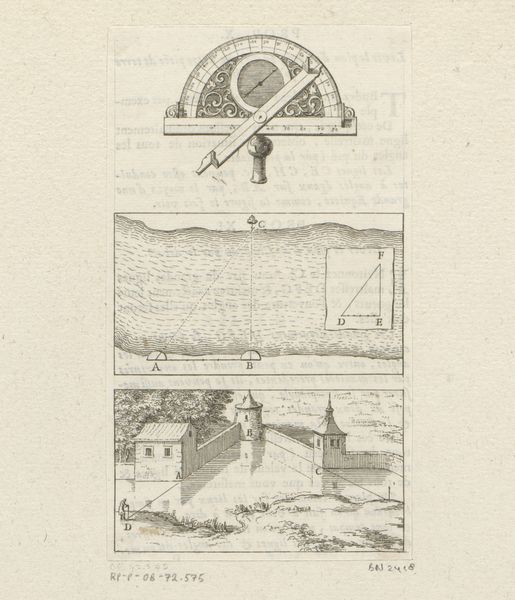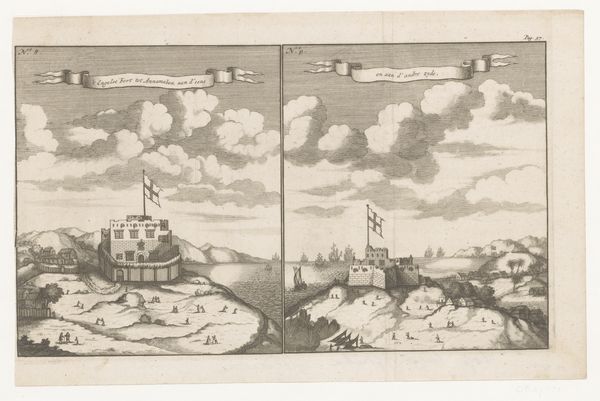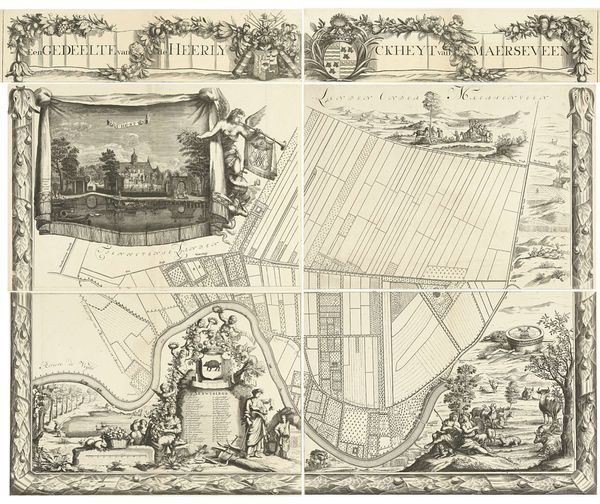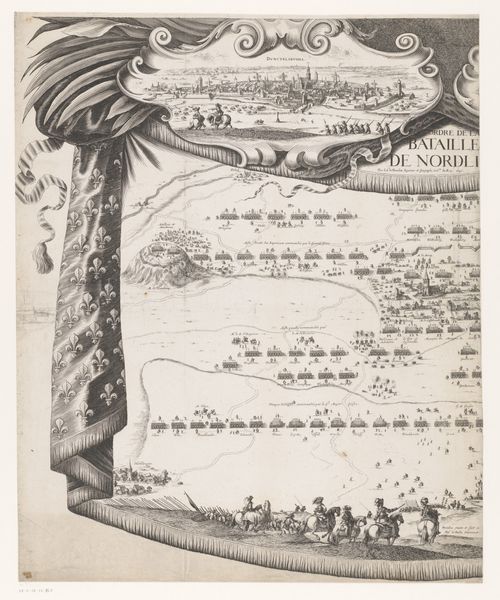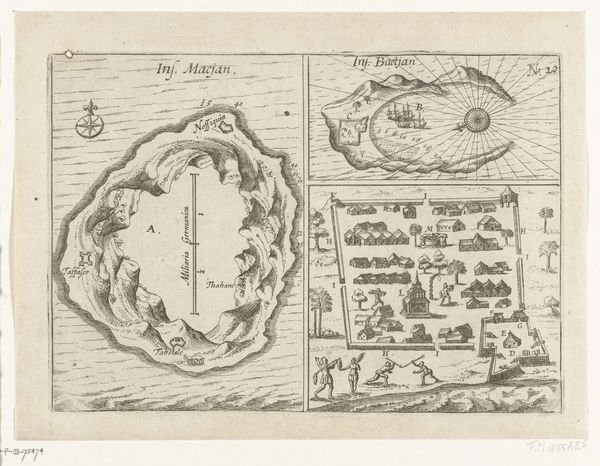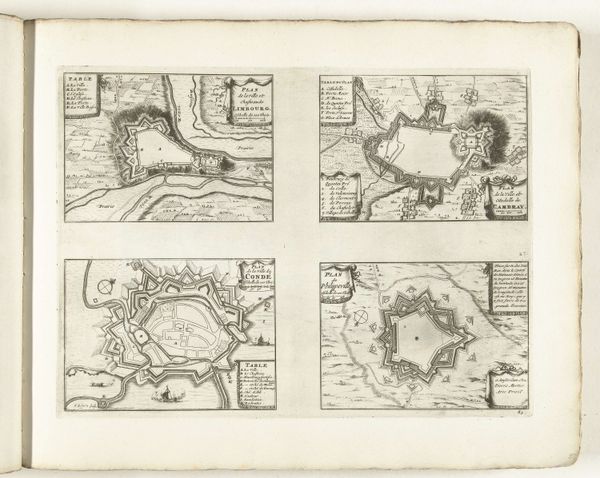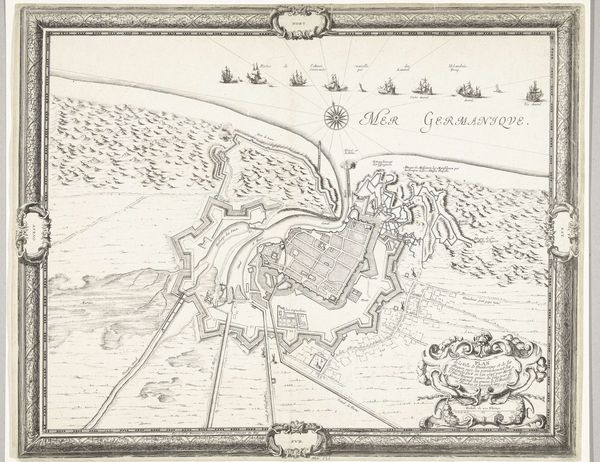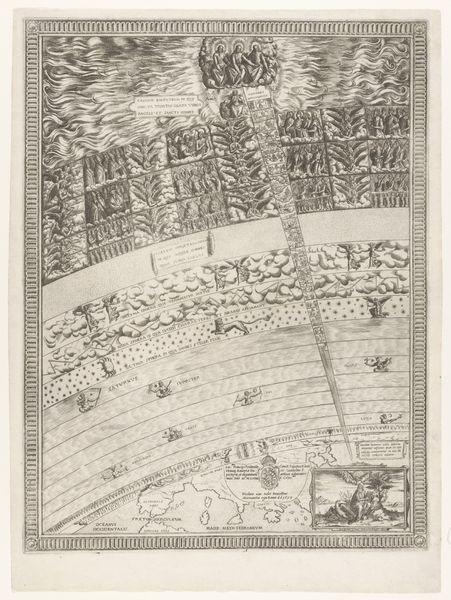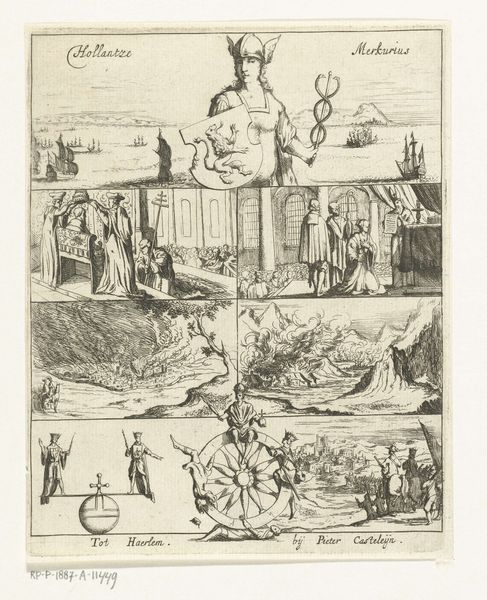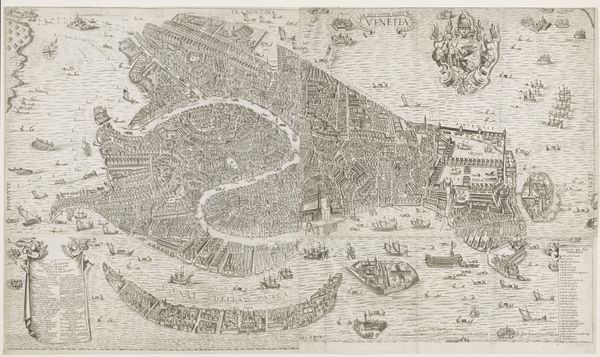
Fodina argentea Sahlensis – A Silver Mine at Sala - I (from Aubry de La Mottraye's "Travels throughout Europe, Asia and into Part of Africa...," London, 1724, vol. II, pl. 33, no. 1) 1723 - 1724
0:00
0:00
drawing, print, engraving
#
drawing
#
baroque
# print
#
landscape
#
history-painting
#
engraving
Dimensions: sheet: 9 11/16 x 6 11/16 in. (24.6 x 17 cm)
Copyright: Public Domain
Editor: Here we have an engraving from 1723-24 entitled "Fodina argentea Sahlensis – A Silver Mine at Sala - I," made by William Hogarth. It's remarkably detailed, almost like an infographic of a mining operation. I’m struck by how it combines landscape, architecture, and even human activity in such a systematic way. What do you see in this piece? Curator: I see layers of cultural memory embedded in Hogarth’s precise lines. Look at how the composition moves from surface to subterranean realms – a visual journey into the earth's hidden treasures and human endeavors. Do you notice the symbolic resonance between the maps of land above the ground and below? Editor: Yes, they seem to mirror each other, which is a bit unnerving. It’s like the earth itself is a reflection of our efforts. Is there any significance to how literal everything appears? Curator: Hogarth doesn't just show us the silver mine; he offers a window into the psychological space of industry. This isn't simply a geographical document; it’s an allegory of human ambition and its impact on the world. Mining is a repeated trope in world mythology as access to the secrets of nature. Editor: That’s fascinating. The way it connects human ambition to the environment. Almost a visual treatise on man versus nature, I suppose? Curator: Precisely. And Hogarth uses the symbolic language of his time, which gives insight into 18th century scientific and even colonial attitudes. Consider also how it relates to contemporary conversations around labour and the natural world. It allows for critical discussion even today. Editor: It definitely offers more to think about than first meets the eye. Thanks for helping me dig a bit deeper! Curator: My pleasure. It’s always exciting to see how historical images like these continue to resonate across time.
Comments
No comments
Be the first to comment and join the conversation on the ultimate creative platform.
